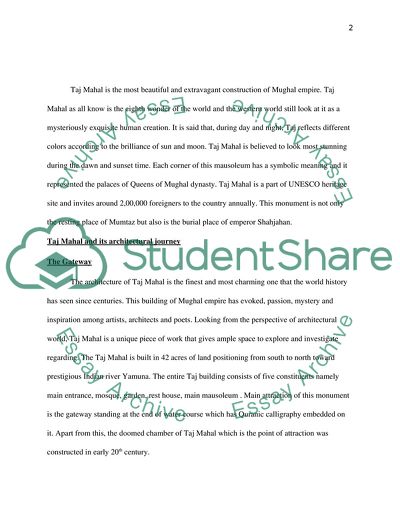Cite this document
(The Architecture of the Taj Mahal Coursework Example | Topics and Well Written Essays - 2000 words, n.d.)
The Architecture of the Taj Mahal Coursework Example | Topics and Well Written Essays - 2000 words. https://studentshare.org/architecture/1799078-the-architecture-of-the-taj-mahal-topic-in-instructions
The Architecture of the Taj Mahal Coursework Example | Topics and Well Written Essays - 2000 words. https://studentshare.org/architecture/1799078-the-architecture-of-the-taj-mahal-topic-in-instructions
(The Architecture of the Taj Mahal Coursework Example | Topics and Well Written Essays - 2000 Words)
The Architecture of the Taj Mahal Coursework Example | Topics and Well Written Essays - 2000 Words. https://studentshare.org/architecture/1799078-the-architecture-of-the-taj-mahal-topic-in-instructions.
The Architecture of the Taj Mahal Coursework Example | Topics and Well Written Essays - 2000 Words. https://studentshare.org/architecture/1799078-the-architecture-of-the-taj-mahal-topic-in-instructions.
“The Architecture of the Taj Mahal Coursework Example | Topics and Well Written Essays - 2000 Words”. https://studentshare.org/architecture/1799078-the-architecture-of-the-taj-mahal-topic-in-instructions.


